May 30, 2025 | 16:45 GMT +7
May 30, 2025 | 16:45 GMT +7
Hotline: 0913.378.918
May 30, 2025 | 16:45 GMT +7
Hotline: 0913.378.918
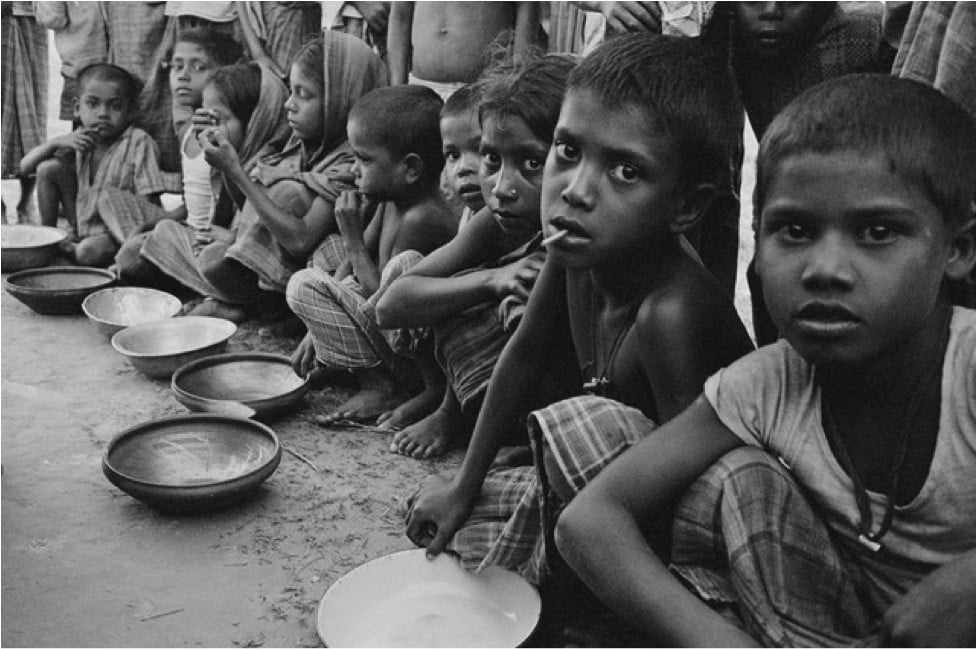
Children in India. Photo: Akshaya Patra.
Introduction:
A Green Revolution (GR) only occurs in a country when it meets at least four main factors: (i) effective agricultural policy; (ii) developed irrigation system; (iii) adequate supply of high yielding seeds; and (iv) adequate presence of agrochemicals on the market. A country will fail to initiate this revolution even if one of these 4 elements is missing.
Green Revolutions worldwide ended nearly three decades ago but continued in Vietnam until the early 2010s due to political and economic conditions, and it is still happening in some other underdeveloped countries such as Myanmar, Bangladesh, Cambodia, and Laos. This revolution has not yet been realized in the countries south of the Sahara Desert because of the lack of drainage systems and appropriate agricultural policies.
So, how did the last Green Revolution of Vietnam happen?
It can be said that the first GR happened about 10,000 - 11,000 years ago, the time of the Hoabinhian Culture (Colani, 1930; Institute of Archeology, 1998 and 1999), when people began to change their lifestyle from complete dependence on nature to actively lead a life through agriculture, creating stone production tools, and taming some species of herbs and wild animals for food. People called it by another name: the Neolithic Revolution.
The second GR, or the Upland Rice Revolution, was when people created upland rice cultivation. Rice-growing tribes appeared in many Southeast Asian countries, including Vietnam at the end of the Neolithic era, about 5,000 - 6,000 years ago (Bui Thiet, 2000). Thanks to the exploitation of upland rice cultivation, people no longer had to move frequently to find food and tended to settle for a longer time in one place.
The third GR or Metal Revolution occurred when mankind discovered brass and iron to make bronze and iron axes, picks, and plows about 2,000 - 4,000 years ago (Chang, 1985). This was a very important discovery, helping to increase the efficiency of agroproduction.
Thanks to such a discovery, in Vietnam, the wet rice civilization made its appearance during the reign of Hung Kings - An Duong Vuong, when ancient Vietnamese people tended to migrate from the midland and hills to the valleys and deltas of the Red River, Ca River and Ma River. established villages, with the appearance of a series of bronze drums and other archaeological relics in Dong Son culture (Tran Van Dat, 2010).
The last GR happened largely because of the discovery of using "dwarf genes" to help rice absorb chemical fertilizers effectively and prevent the tree from falling, thus less loss. The dwarf gene was found in the Norin 10B wheat plant in Japan. Since then, the dwarf gene of wheat was fully utilized in Orville Vogel's breeding program at Washington State University (Pullman, Washington, USA).
In 1953, a team of wheat experts led by Dr. Norman Borlaug, winner of the 1970 Nobel Peace Prize, head of the International Maize and Wheat Improvement Center (CIMMYT) in Mexico, used Vogel's dwarf wheat gene to create high-yield, falling-resistance wheat varieties.
In 1960, the International Rice Research Institute (IRRI) was established in Los Banos, Philippines with the auspices of the Ford Foundation and Rockefeller Foundation from the USA, using Dee-geo-woo-gen rice dwarf gene, a short-term rice variety of Taiwan and Indonesia's Peta tall rice variety to create IR8 rice in 1962.
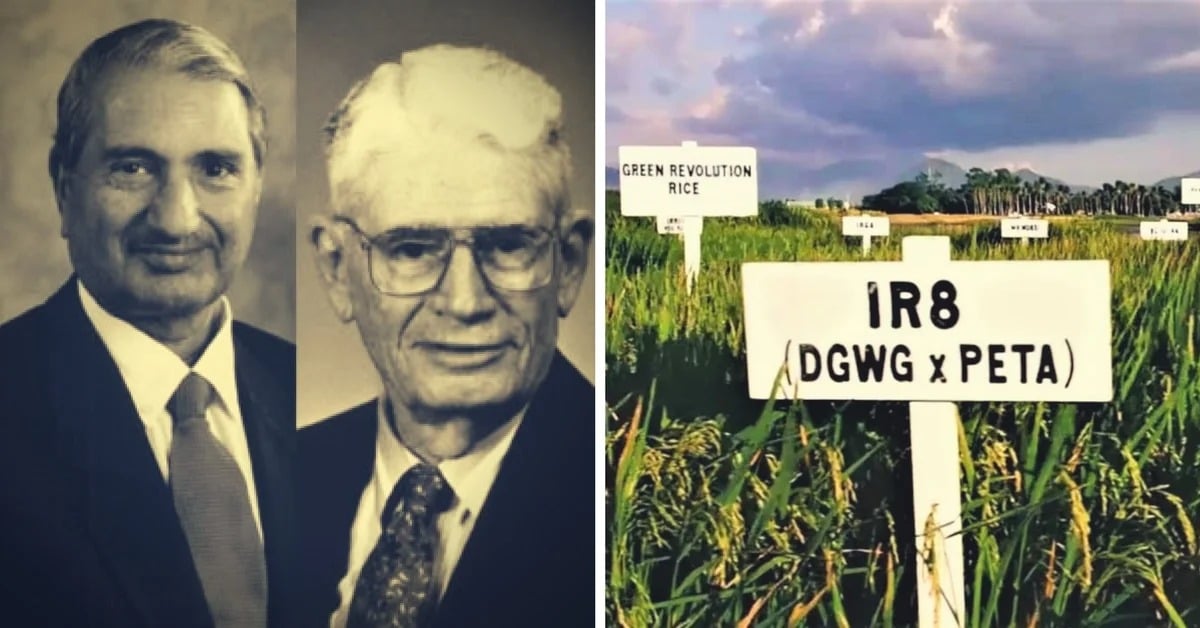
Developed by rice scientists working at IRRI in the early 1960s, the IR8 rice variety is credited with saving many parts of India and Asia from famine. Photo: The Better in India.
There are many lines selected from the Dee-gee-woo-gen x Peta combination, but the most promising line IR8-288-3 was widely tested by IRRI in tropical and surrounding climates in 1965. IR8-288-3 was later named IR8 by IRRI and became popular in 1966. Some seeds were sent to Asian countries such as India, Bangladesh, Indonesia, Malaysia, Philippines, Sri Lanka, and Vietnam for trial planting. Most of the mentioned countries have successfully popularized high-yield rice while making new developments on wheat, creating a big GR in Asia.
In Asia, IR8 and other improved rice varieties were initially known as “high-yield rice” then “modern rice”, commonly planted in many countries including Vietnam from the late 1960s to the early 2010s. After the productivity and production of wheat and rice increased rapidly, other cereals such as corn and sorghum also inherited semi-dwarf properties, making the GR strongly expand to many parts of the world.
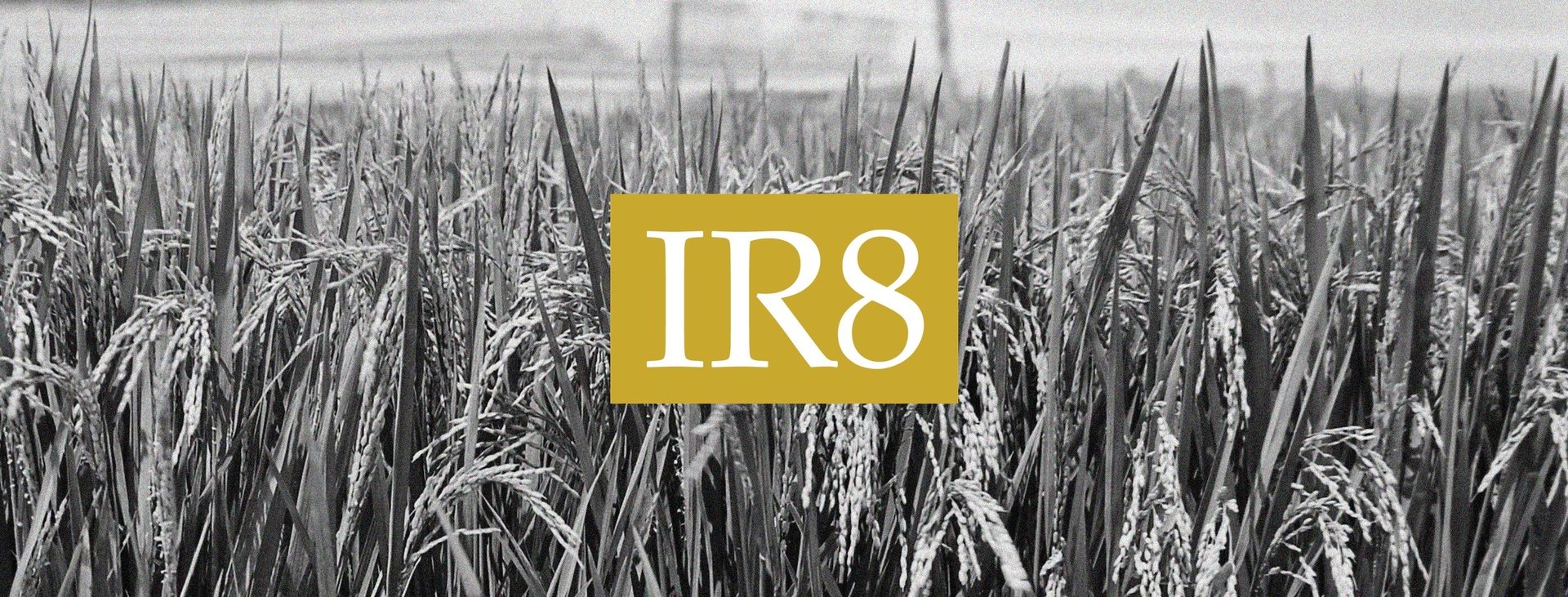
IR8 was the fruit of combined efforts of three renowned scientist: Dr. T.T. Chang, Dr. Peter Jenning, and H.M. Beachell. Photo: The Better in India.
The GR occurred in Vietnam in the late 1960s after the introduction of the high-yield varieties of the International Rice Research Institute (IRRI).
In May 1966, the Rice Experiment Center (now Horticultural Research Institute) in Long Dinh, Tien Giang under the Southern Ministry of Rice Cultivation received 10 kg of IR8 rice seeds for the first trial planting on 2,000 m2 in the rainy season (contact Pham Thanh Kham, former Center Manager, 2000). During that season, IR8 rice yielded 4 tons/ha, doubling the average yield of traditional rice of 2 tons/ha.
The Saigon College of Agriculture, Forestry and Animal Health received 1kg of IR8 variety from IRRI for a photoperiodism experiment along with other selected local rice varieties from the South. The experimental results were reported in the summer of 1967 through a final thesis (Tran Van Dat, 1967). In this experiment, the potential yield of the IR8 rice variety was monitored and highly evaluated while compared with other selected rice varieties.
Because of the encouraging results and the urgent need for rice at that time, the Ministry of Rice Cultivation paid special attention to IR8 and decided to develop mass cultivation while still monitoring experimental growing at the rice experiment center in Long Dinh, rice experiment farms in the Central and Southern regions, Agricultural Research Institute and Can Tho University, through cooperation with IRRI in the Philippines. It can be said that Vietnam was one of the pioneering countries in the GR worldwide.
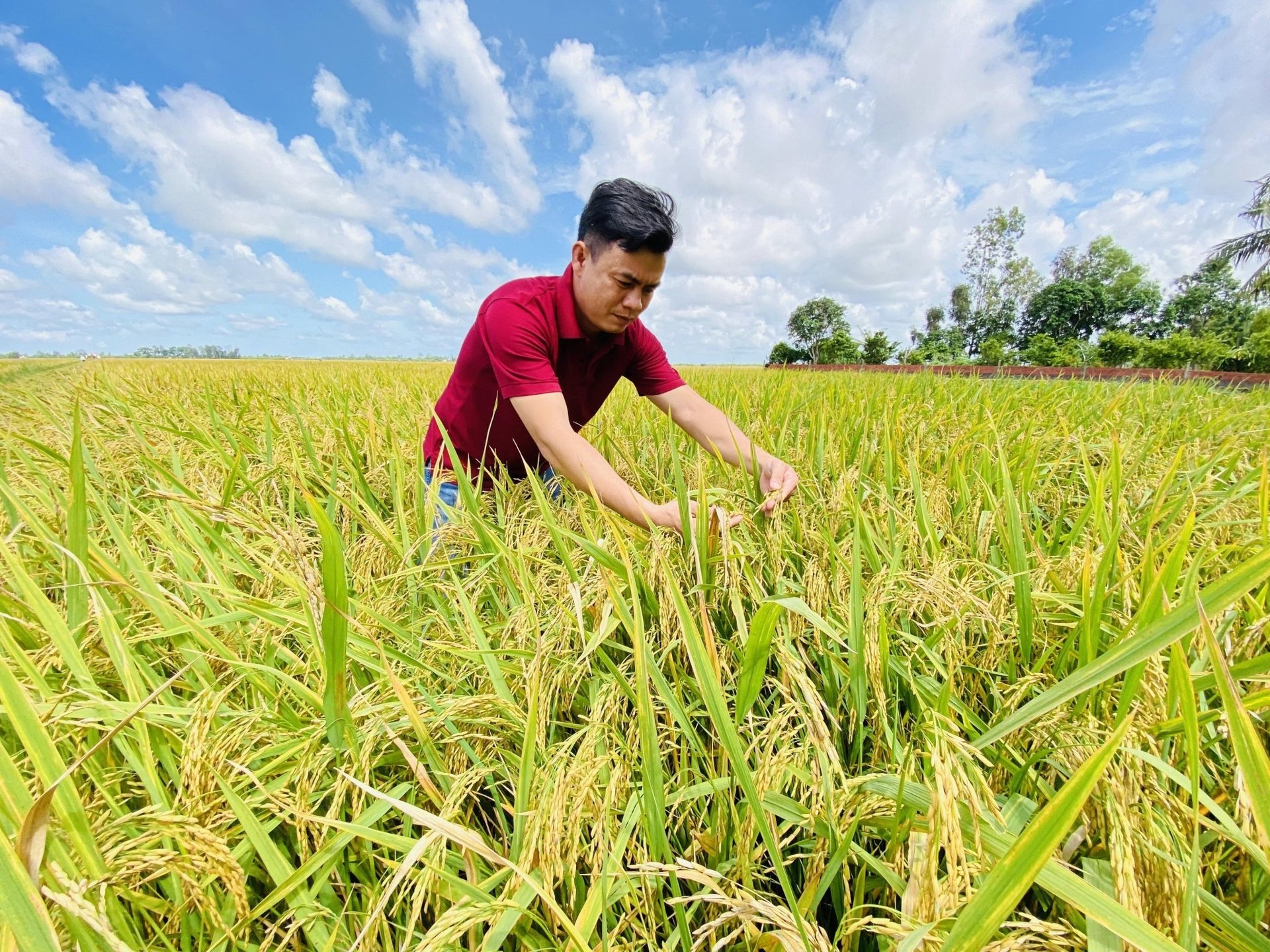
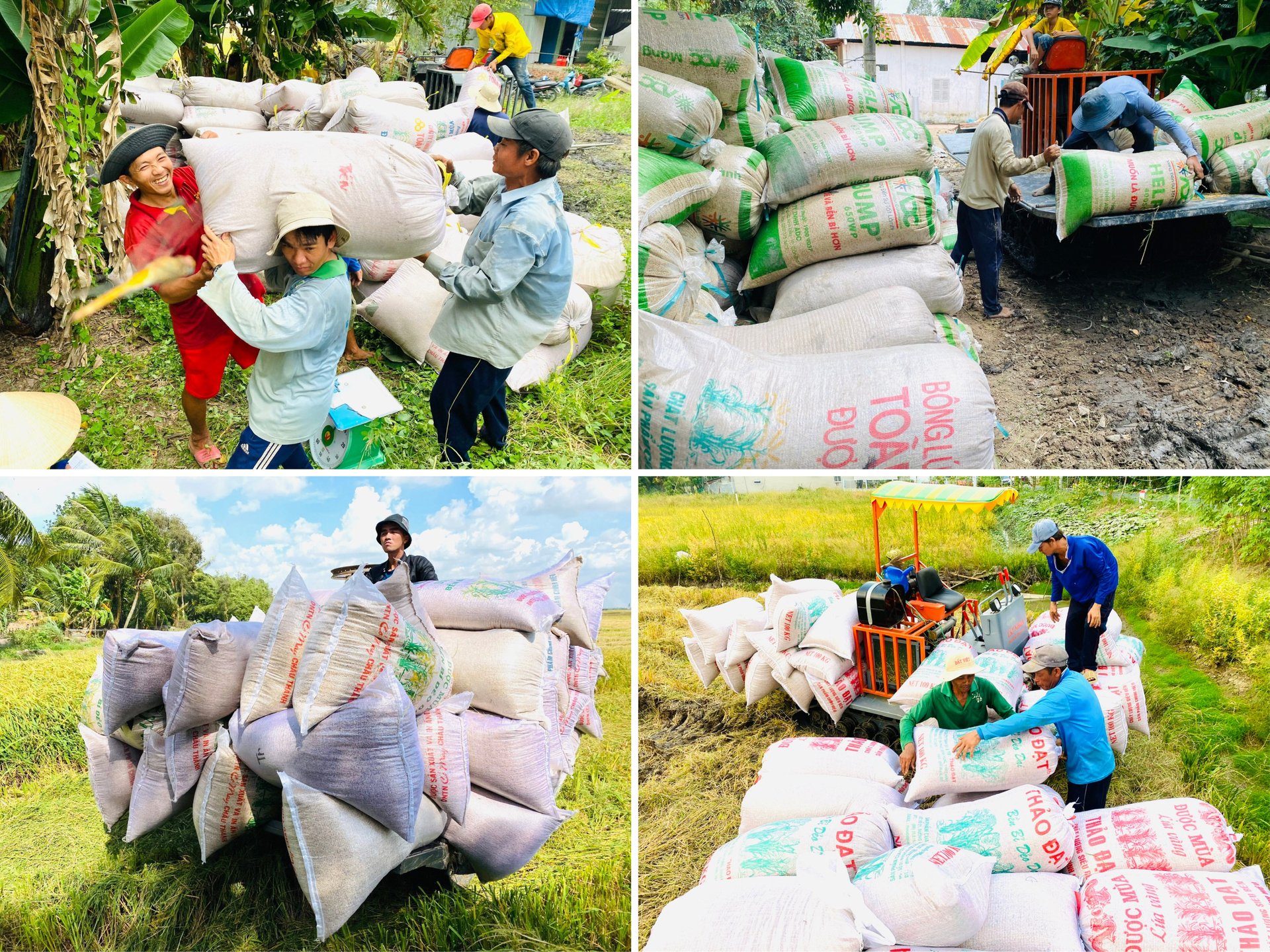
From a country with barely nothing to eat, Vietnam became a rice exporting powerhouse.
In the 1968-69 crop, 23,373 ha of IR8 rice was harvested, achieving an average yield of 4 tons/ha. The rice variety was then named Than Nong 8 (TN8). The rice crop 1968-69 was the time when the program "Increasing the production of Than Nong rice" was strongly popularized and implemented on a large scale by the Department of Rice under the Ministry of Rice Cultivation. After that, other high-yield rice varieties like IR5, IR20, and IR22 were introduced for testing and popularized through the cooperation program with IRRI. The Than Nong rice growing area continued to expand rapidly.
According to a report by the National Institute of Statistics, modern rice was grown on 204,000 ha (30%) of the irrigated area in the 1969-70 crop, 452,100 ha in 1970-71, 674,740 ha in 1971-72, and 835,000 ha in 1972-73. By the 1973-74 crop season, the area of modern rice (IR8, IR5, IR20, IR22, TN73-1 and TN73-2) was 890,000 ha (approximately 32%), and Than Nong rice accounted for 53% of the total rice output in the South. In the 1974-75 rice crop, the total rice production in the South was estimated at over 7 million tons of rice.
In the two early crops from 1969 to 1970, the Than Nong rice production increase program developed at a fast pace, but then encountered many obstacles, especially in terms of the consumption market. After IR8, IR5 rice was introduced to grow in deep fields thanks to its being a tall plant.
Later, the popularization of two rice varieties TN8 and TN5 became increasingly difficult because farmers and consumers began to complain about the poor quality of these two varieties. TN8 were in the group of medium and large rice grains with high amylose content (28%), so the rice became hardened and hard to eat when turned cold.
The last Green Revolution in Vietnam lasted from 1968 to 2012, increasing rice output from 8.4 million tons in 1968 to 43.7 million tons in 2012, an increase of more than 9.5% per year. The rice growing area increased from 4.9 million ha to 7.8 million ha, and productivity increased from 1.7 tons/ha to 5.6 tons/ha, a 229% increase (General Statistics Office, 2018). This great achievement in the early years of Doi Moi was due more to policy changes than technical improvements, but later technical developments including developed irrigation works and the use of chemical fertilizers played a more important role as the GR continued.
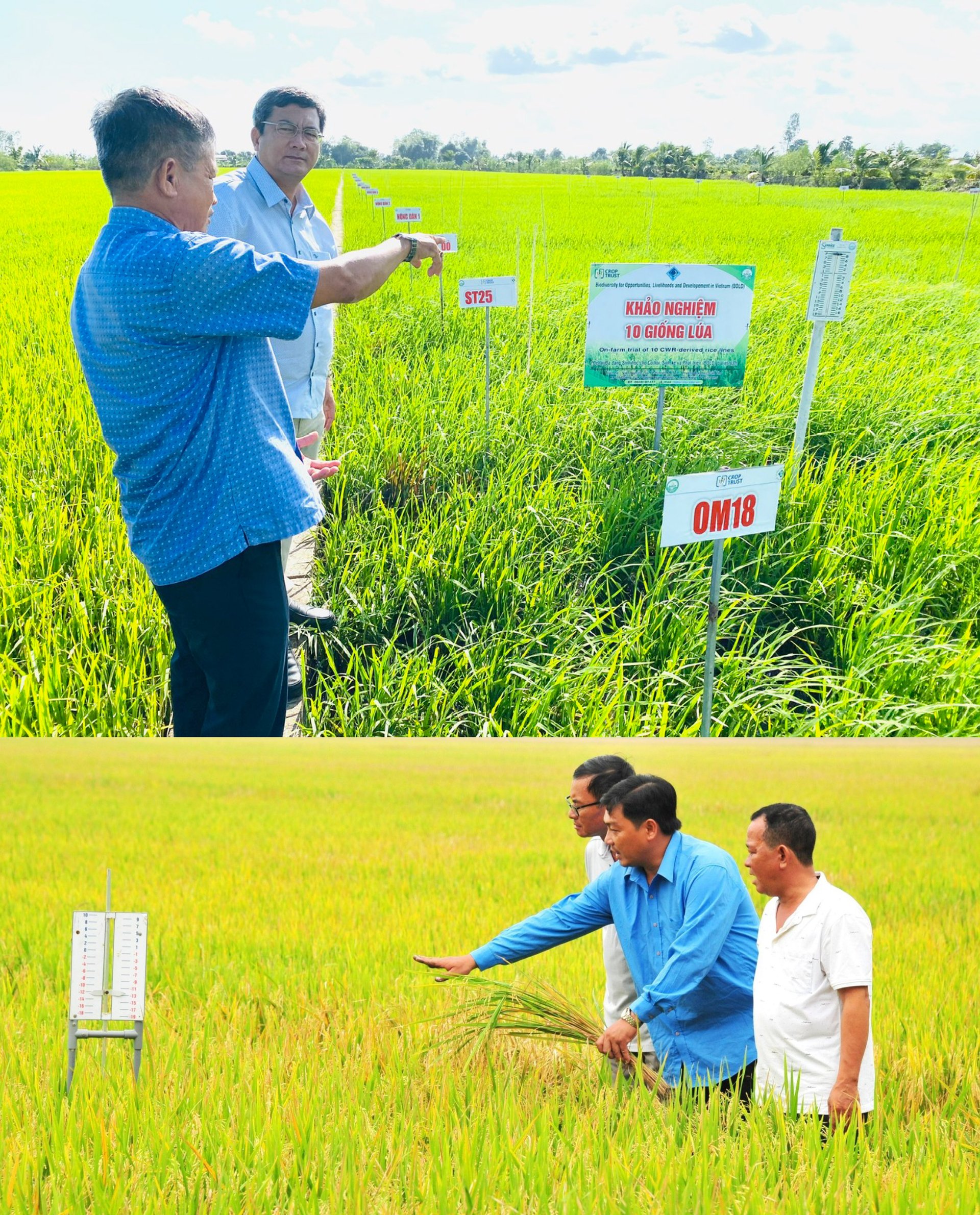
During the GR period, domestic rice production increased continuously at high or low levels depending on state policy, from 8.4 million tons in 1968 to 38.9 million tons in 2009 and 44 million tons in 2018.
Apart from factors such as policy, organization, research, agricultural extension, etc., according to IRRI and researchers, the three most important production factors have contributed greatly to the success of GR, include the development of irrigation systems (29%), the use of improved rice varieties (23%) and the use of chemical fertilizers (24%). However, the main deciding factor is first and foremost the national rice policy (Herdt and Capule, 1983).
(1) National rice policy: This is the first decisive factor for the success of a national program or project. The most typical case of Vietnam is the rice policy in the North and South during the 1968 - 1975 period, and the economic Doi Moi period from 1988 to the present.
(2) Development of irrigation systems: The phrase "First water, second fertilizer, third hard work, four seeds" still holds absolute value in Vietnam's agriculture industry. Water is an essential element that determines the success or failure of crops and food security.
In recent decades, Vietnam has given priority to irrigation systems, investing roughly 30 million dollars per year in irrigation works (Le Hong Nhu, 1999). In the North, the drainage system and dykes are strengthened. Many deep-lying areas of Dong Thap Muoi have changed from one crop with low yield to 2 or 3 crops with high yield. Land reclamation work in the Long Xuyen Quadrangle, Ca Mau Peninsula and the coastal freshening program have increased the rice growing area by hundreds of thousands of ha. During the GR, the country's irrigated land area increased from 1.1 million ha in 1968 to 3 million ha in 1998 (FAO, 2000).
(3) Use of improved rice varieties: Wide popularization of improved rice varieties with dark green and straight leaves, high nitrogen response ability and high harvest index (HI: 0.4-0.5) has helped this land escape from the situation of long-term low yield of 1.2 tons/ha during the first half of the twentieth century and 2 tons/ha until the beginning of the GR.
The story of IR8 was just the start. After that, a series of different IR rice varieties were put on trial planting and released for common planting. They were of good grain quality, able to resist some serious pests and diseases such as brown planthopper, rice blast, leaf blight, etc.
(4) Use of chemical fertilizers: The appearance of modern rice varieties has stimulated the bloom of the chemical industry (fertilizers, pesticides, and herbicides). The average rice yield in Vietnam can increase to 6 tons/ha in the rainy season and 8 tons/ha in the dry season, if chemical fertilizers are used fully and at the right time under improved irrigation conditions.

Green Revolution has brought many changes to Vietnam's rice industry.
Looking back, the Green Revolution has made big and important changes to the rice cultivation structure:
(i) The rice cultivation changed from transplanting to direct-sowing, which currently accounts for more than 95% of the rice growing area in the South. In the Mekong Delta, the shift in crop structure was reflected in a decrease in the area of seasonal rice, and an increase in the sowing area of winter-spring and summer-autumn rice.
This trend continued to spread to the Central and the North considering the problem of saving water, expensive labor and the presence of affordable herbicides. Farmers also changed from rice cultivation to growing fruit trees or vegetables because of higher income, this trend was therefore encouraged in excess rice production areas such as the Mekong Delta to improve farmers' lives.
(ii) In the North, the Chiem rice crop (from late October/November to early April/May) is replaced with the spring crop.
(iii) On a national scale, the winter-spring crop area increased from 1.8 million ha in 1985 to 3.1 million ha in 2009. During the same period, the summer-autumn crop increased from 994,300 ha to 2.4 million ha and the summer rice crop decreased from 2 9 million ha to 2 million ha (General Statistics Office, 2009).
(iv) Short-term, high-quality rice varieties (90 - 100 days) were used to increase the number of crops per year while avoiding flood or drought at the end of the season.
(v) Planting high-quality rice became the norm, so the value and competitiveness of Vietnamese rice were enhanced both in the domestic and international markets.
(vi) Mechanization of rice production was improved, especially in terms of land preparation, irrigation, and harvesting.
(vii) The North had been trying to implement a hybrid rice production program since 1991, using F1 seeds mostly imported from China.
The Green Revolution helped Vietnam not only become self-sufficient in rice but also a top-rank rice exporter in the world, creating relatively stable and low rice prices for the consumption market. However, GR also creates some negative biological, environmental and socio-economic effects (Tran Van Dat and Ton That Trinh, 1994).
Regarding the biological aspect, the strong popularization of modern rice, dwarf-gene rice, and improved rice varieties has gradually caused local rice varieties to disappear. The phenomenon of genetic erosion has become increasingly severe. Furthermore, the use of short-term rice varieties, chemical fertilizers, especially nitrogen fertilizers, and pesticides has completely changed traditional rice growing practices and transformed the farming system, causing many negative impacts.
The status of many insects and diseases has changed from insignificant to dangerous, such as leaf blight or rice blast (Pyricularia grisae Cav.) due to the high use of nitrogen fertilizers. Sheath blight (Rhizoctonia solani) becomes a more important topic. Brown spot disease is less known now than in the past. Rice dwarf disease and ragg stunt are newly emerging diseases. Brown planthoppers (Nilaparvata lugens), two-spotted stem borers (Scirpophaga incertulas, Walker) also become more dangerous.
In terms of environment, to produce 6 tons/ha of rice, improved rice varieties need to use 100 kg N, 50 kg P2O5, 160 kg K2O, 19 kg Ca, 20 kg Mg, 10 kg S, 0.6 kg Fe, 0.19 kg Zn, 0.64 kg Mn, 0.08 kg Cu, 0.06 kg B, and 0.004 kg Mo per hectare per crop from the soil (contact Dr. R. Roy, FAO, 1990). High-yield rice varieties use more soil nutrients than traditional rice varieties, which is also the reason for the name "soil mining plants”. Farmers have a habit of only using fertilizers with three main nutrients N, P, K and completely forgetting the necessary nutrients. The deficiency of Zn, S, B in soil has been recorded around the world.
Exploiting waterlogged areas and saline soils also put heavy pressure on the environment. The intense exploitation of the Mekong Delta has caused the area to be flooded more frequently and saltwater to penetrate deeper into the continent than before. Nitrogen fertilizers contribute to global warming in the form of N2O gas. Excessive use of disinfectants and herbicides leads to environmental pollution.
To overcome the above problems, it is necessary to focus on creating sustainable rice farming practices that are resistant to today's important biotypes and pest strains, and can withstand different climate extremes, global climate change and difficult land issues. The Good Agriculture Practices (GAP) standards or green, low-emission rice farming are considered good examples. The industry needs to apply Integrated Crop Management (IPM) through close coordination between research, agricultural extension and farmer's cultivation practices.
In conclusion, the Green Revolution of Vietnam lasted from 1968 to the early 2010s, bringing good results to the country in the time of market economic integration. This is a favorable opportunity for the country, including urban and rural areas, to progress together, as long as the state implements appropriate policies. A new revolution is being attempted, with the aim of avoiding the negative effects that follow the GR, paying special attention to the aspects of environment, climate change and welfare of rural farmers, not only for the present but also future generations.
Translated by Samuel Pham

(VAN) Several scientists and farmers are experimenting with soil treatment in some key durian-growing regions such as Cai Lay (Tien Giang), Dak Song, Gia Nghia, and Dak R’lap (Dak Nong).
/2025/05/25/4127-3-073637_820.jpg)
(VAN) Thanks to the promotion from an FAO-implemented project, vegetable production in greenhouses in Moc Chau has seen strong development, from 1.5 hectares in 2021 to nearly 50 hectares in 2024.

(VAN) FAO has recently supported USD 140,000 to implement the project 'Risk mitigation human-animal interface risks through disease control initiatives in pig farming.'

(VAN) The People's Committee of Tra Vinh province has approved an adjustment to the investment policy for the Green Hydrogen Plant project, increasing its area to approximately 52.76 hectares.
![Reducing emissions from rice fields: [2] Farmers’ commitment to the soil](https://t.ex-cdn.com/nongnghiepmoitruong.vn/608w/files/news/2025/05/05/dsc08881jpg-nongnghiep-140632.jpg)
(VAN) Clean rice cultivation model in Thuong Tan commune, Bac Tan Uyen district, is assisting local residents in achieving sustainable agriculture by substantially reducing costs, increasing productivity, and protecting the environment.

(VAN) At the conference to disseminate Resolution No. 68, AgriS introduced its digital agricultural ecosystem and reaffirmed its commitment to accompanying the Government in promoting private sector development and sustainable agriculture.

(VAN) 'Blue Ocean - Blue Foods' initiative is designed to restore marine ecosystems and establish sustainable livelihoods for local communities by cultivating a minimum of 1,000 hectares of cottonii seaweed in the first three years.